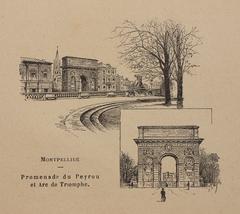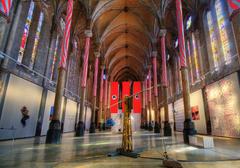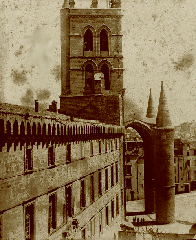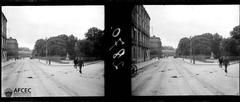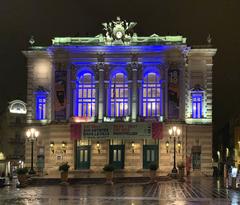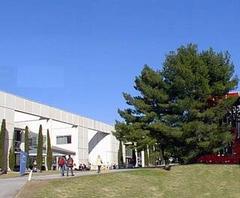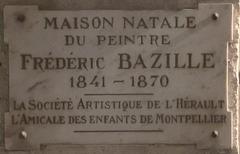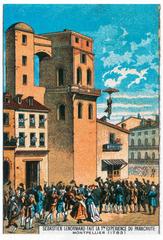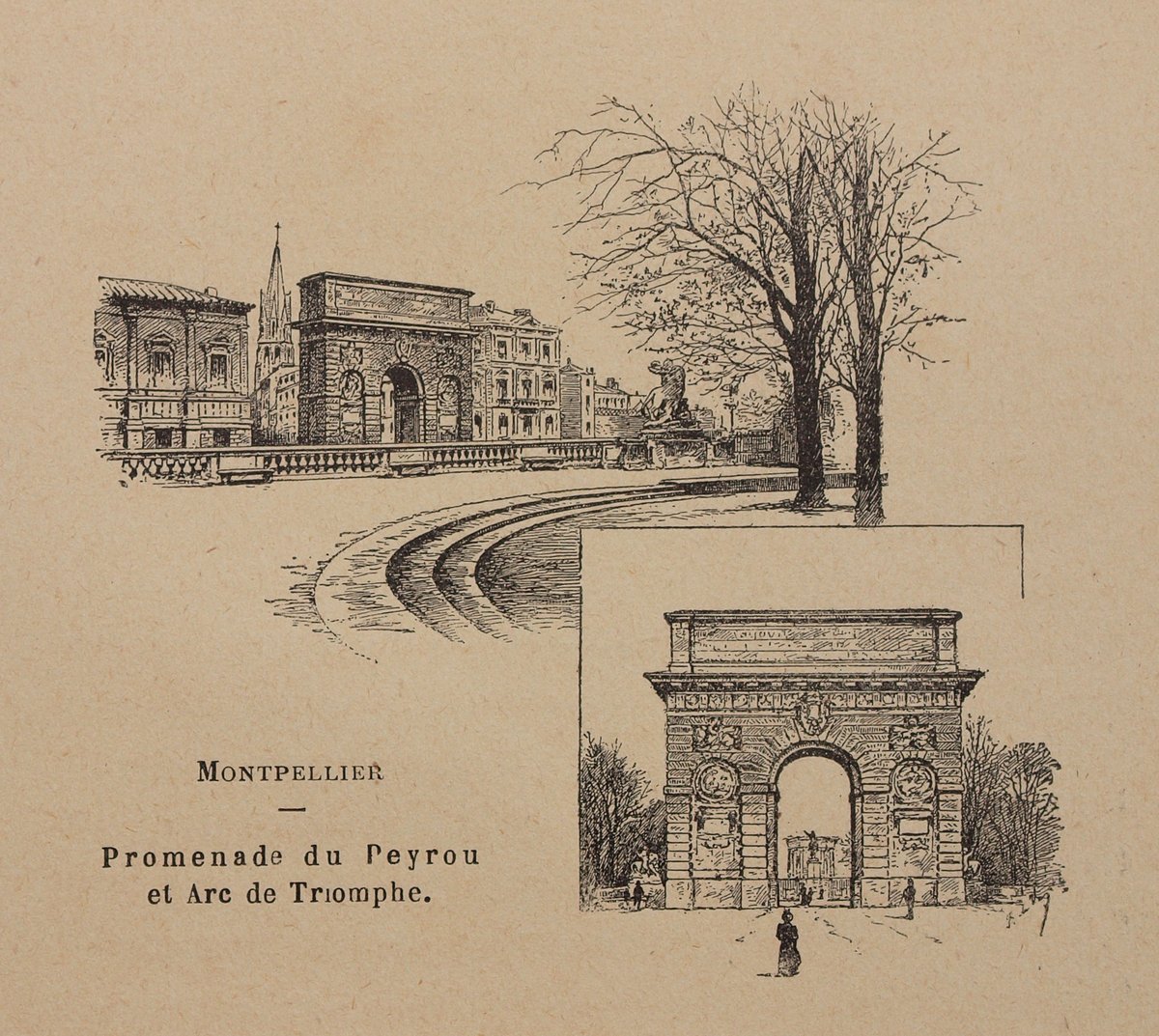
Comprehensive Guide to Visiting Porte du Peyrou - Arc de Triomphe, Montpellier, France
Publication Date: 18/07/2024
Introduction to Porte du Peyrou
Welcome to the comprehensive guide to visiting Porte du Peyrou, also known as the Arc de Triomphe of Montpellier. This iconic landmark is not only a marvel of classical French architecture but also a significant cultural symbol for the city of Montpellier. Constructed in 1691 to honor King Louis XIV, the Porte du Peyrou stands as a testament to the city’s rich history and architectural grandeur. The monument is a focal point for various cultural events and celebrations, making it a must-visit destination for tourists. In this guide, we will delve into the history, architectural details, and practical visitor information to help you make the most of your visit to this remarkable monument. Whether you’re a history buff, a photography enthusiast, or simply looking for a beautiful spot to explore, the Porte du Peyrou has something for everyone. (Montpellier Tourism, Structurae, Montpellier Now).
Table of Contents
- Introduction
- History
- Architectural Significance
- Cultural Importance
- Symbol of Urban Development
- Visitor Information
- Visitor Experience
- Preservation Efforts
- Educational Value
- Integration with Modern Montpellier
- FAQ Section
- Conclusion
History
Origins and Construction
The Porte du Peyrou was commissioned in 1691 by the city of Montpellier to honor King Louis XIV, often referred to as the “Sun King.” Designed by architect François d’Orbay, the arch draws inspiration from the famous Arc de Triomphe in Paris. It celebrates Louis XIV’s military victories and the prosperity brought to France under his reign.
Historical Context
Constructed in 1691, the Porte du Peyrou is adorned with intricate bas-reliefs and inscriptions that commemorate significant events and achievements of Louis XIV, such as the capture of Namur and the crossing of the Rhine. These elements reflect the grandeur and influence of French monarchy at the time (Montpellier Tourism).
Architectural Significance
Standing at 15 meters high, the Porte du Peyrou is constructed from golden limestone, which gives it a distinctive and majestic appearance. The detailed carvings and sculptures on the arch depict various allegorical figures and scenes from Louis XIV’s military victories. It is an exemplary piece of classical French architecture, embodying the grandeur and symmetry characteristic of the Baroque period (Structurae).
Cultural Importance
The Porte du Peyrou is not just an architectural marvel but also a cultural symbol for the people of Montpellier. It represents the city’s historical connection to the French monarchy and its importance in the broader narrative of French history. The arch is a focal point for various cultural events and celebrations, including Bastille Day and other national holidays, fostering a sense of community and shared heritage (Montpellier Now).
Symbol of Urban Development
Located at the western end of the Promenade du Peyrou, the arch marks the entrance to this historic esplanade, which offers stunning views of the city and the surrounding countryside. Developed in the late 17th century as part of Montpellier’s expansion and beautification efforts, the promenade reflects the city’s transformation into a modern and attractive urban center (France-Voyage).
Visitor Information
Visiting Hours and Ticket Prices
The Porte du Peyrou is open to the public throughout the year with no entrance fees, making it an accessible attraction for all visitors. However, it is recommended to check the official Montpellier Tourism website for any updates on visiting hours or special events that might impact access.
Travel Tips and Accessibility
The Porte du Peyrou is easily accessible from the city center via public transportation options, including buses and trams. For those driving, parking facilities are available nearby. The site is also wheelchair accessible, ensuring that all visitors can enjoy this historical landmark.
Nearby Attractions
While visiting the Porte du Peyrou, consider exploring nearby attractions such as the Promenade du Peyrou, the Jardin des Plantes, and the Montpellier Cathedral. These sites offer a deeper insight into the city’s rich history and beautiful landscapes.
Visitor Experience
Guided Tours and Photographic Spots
Guided tours are available for those who wish to learn more about the history and significance of the Porte du Peyrou. These tours often include other historical landmarks in Montpellier. For photography enthusiasts, the arch and its surroundings provide stunning backdrops, particularly during sunset.
Special Events
The Porte du Peyrou is a venue for various cultural events and celebrations. From Bastille Day festivities to local parades, visitors can experience the vibrant culture of Montpellier. It is advisable to check the local event calendar for any special happenings during your visit.
Preservation Efforts
The Porte du Peyrou has undergone several restoration projects to preserve its structural integrity and aesthetic appeal. The most recent restoration, completed in 2019, involved cleaning the stone surfaces, repairing damaged sculptures, and reinforcing the structural elements of the arch. These preservation efforts are supported by both the local government and heritage organizations, reflecting the importance of the arch in Montpellier’s cultural heritage (Heritage France).
Educational Value
The Porte du Peyrou serves as an educational resource for both locals and visitors. It provides a tangible connection to the past, allowing people to learn about the historical events and figures that have shaped Montpellier and France as a whole. Educational tours and informational plaques around the arch offer insights into its historical and architectural significance, making it a valuable learning experience for students, historians, and tourists alike (Montpellier History).
Integration with Modern Montpellier
Despite its historical roots, the Porte du Peyrou seamlessly integrates with the modern urban landscape of Montpellier. The area around the arch has been developed to accommodate contemporary needs while preserving its historical charm. Cafes, shops, and other amenities are available nearby, making it a convenient and enjoyable destination for visitors. The arch stands as a bridge between the past and the present, symbolizing the city’s ability to honor its heritage while embracing modernity (Montpellier City Guide).
FAQ Section
Q1: What are the visiting hours for Porte du Peyrou? A: The arch is open to the public throughout the year, but it is recommended to check the official Montpellier Tourism website for any updates.
Q2: Is there an entrance fee for Porte du Peyrou? A: No, there are no entrance fees.
Q3: How can I get to Porte du Peyrou? A: The arch is easily accessible by public transportation, including buses and trams. Parking facilities are also available nearby.
Q4: Are there guided tours available? A: Yes, guided tours are available and often include other historical landmarks in Montpellier.
Q5: What nearby attractions can I visit? A: Nearby attractions include the Promenade du Peyrou, the Jardin des Plantes, and the Montpellier Cathedral.
Conclusion
The Porte du Peyrou - Arc de Triomphe is a significant landmark in Montpellier, France, embodying the city’s rich history, architectural grandeur, and cultural heritage. Its historical context, architectural significance, and cultural importance make it a must-visit destination for anyone exploring Montpellier. The arch not only serves as a reminder of the city’s past but also as a vibrant part of its present and future, offering a unique and enriching experience for all who visit. Don’t forget to check out related posts and follow us on social media for more updates on Montpellier’s attractions.
References
- Montpellier Tourism. (n.d.). Discover the Magnificent History and Visitor Guide to Porte du Peyrou – Montpellier’s Arc de Triomphe. https://www.montpellier-tourisme.fr/
- Structurae. (n.d.). Visiting Porte du Peyrou - Arc de Triomphe in Montpellier - History, Tickets, and Tips. https://structurae.net/structures/porte-du-peyrou
- Montpellier Now. (n.d.). Visiting Porte du Peyrou - Arc de Triomphe in Montpellier - History, Tickets, and Tips. https://www.montpelliernow.com/
- Heritage France. (n.d.). Essential Visitor Tips for Porte du Peyrou - Visiting Hours, Tickets, and More in Montpellier. https://www.heritagefrance.org/
- Montpellier History. (n.d.). Essential Visitor Tips for Porte du Peyrou - Visiting Hours, Tickets, and More in Montpellier. https://www.montpellierhistory.com/
- Montpellier City Guide. (n.d.). Essential Visitor Tips for Porte du Peyrou - Visiting Hours, Tickets, and More in Montpellier. https://www.montpelliercityguide.com/
